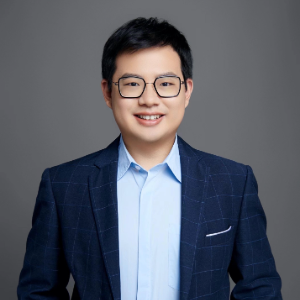Events
Jul 30, 2025
Seminar (2025-07-30)
School of Biomedical Sciences cordially invites you to join the following seminar:
Speaker: Dr. Peijie Zhou, Assistant Professor, Center for Machine Learning Research, Peking University
Talk Title: Towards AI virtual cell through dynamical generative modeling of single-cell omics data
Date: 30 July 2025 (Wednesday)
Time: 2:00 pm – 3:00 pm
Venue: HKJC-S1B, G/F, The HKJC Bldg for Interdisciplinary Research, 5 Sassoon Road
Host: Professor Yuanhua Huang
Biography

Peijie Zhou is an Assistant Professor at the Center for Machine Learning Research and the Center for Quantitative Biology, Peking University. He received his Bachelor's (2014) and Ph.D. (2019) degrees in Computational Mathematics from the School of Mathematical Sciences at Peking University, under the supervision of Professor Tiejun Li. From 2020 to 2023, he was a Visiting Assistant Professor in the Department of Mathematics at the University of California, Irvine, working with Professor Qing Nie. His research focuses on computational systems biology, particularly modeling and simulation of complex biological systems driven by single-cell data and AI methods. His work has been published in interdisciplinary journals such as Nature Methods, Nature Climate Change, Nature Communications, Nature Machine Intelligence, Nature Genetics, Physical Review X, Molecular Systems Biology, and Advanced Science. He also serves as a reviewer for journals including Nature Methods, PNAS, and Nature Communications. He is a recipient of the national youth talent award.
Abstract
Reconstructing continuous cellular dynamics from sparse, high-dimensional single-cell omics data remains a core challenge in computational systems biology. In response, researchers recently propose an AI-driven approach to build a dynamical virtual cell, a digital twin capable of simulating cellular behavior in time and space. This talk presents a framework that integrates flow-based generative models with partial differential equations (PDEs) to infer latent dynamics from time-series single-cell transcriptomics data. For spatial transcriptomics, we introduce stVCR, which aligns transcriptomic snapshots across biological replicates and time points to reconstruct spatiotemporal cell dynamics. To model stochasticity, we explore a regularized unbalanced optimal transport (RUOT) formulation and its theoretical links to Schrödinger bridges and diffusion models. We also present a generative deep-learning solver tailored for efficient inference. Together, these methods demonstrate how generative AI can unify dynamical modeling, spatial reconstruction, and stochastic inference, eventually transforming static single-cell data into dynamic, interpretable simulations of biological processes.
All are welcome.

